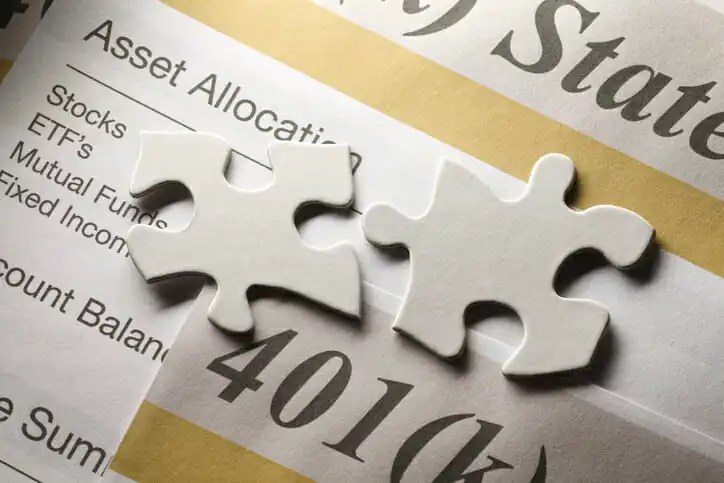
The general rule for asset allocation in retirement is this: You should shift toward more conservative investments once you retire, since you no longer have an active income with which to replace losses. However, you will need this money for decades to come, so you shouldn’t completely abandon your growth-oriented positions. And therefore strike the exact balance based on your personal spending needs. Here are three steps to set up your asset allocation for retirement.
A financial advisor could help you create a financial plan for your retirement needs and goals.
1. Set Your Goals, Then Adjust Over Time
When planning for retirement, it’s important to plan for two issues:
Life expectancy. According to OECD data, the average 65 year old American can expect to live another 18 – 20 years. However, retirees should not plan for that number. An American in good health can often expect to live well into their 80s and 90s, and for people currently making their retirement plans there’s good reason to think that will continue to extend.
If you retire at 65, it’s wise to plan for at least 30 years’ worth of money. More, if possible. This means that you’ll need a large enough nest egg to last you for years to come. It also means that inflation should be a real part of your planning. Even 2% (the Federal Reserve’s target rate of inflation) can take a real bite out of your savings when compounded over decades.
Lifestyle. Retirees who want to travel and have adventures will need more cash on hand than those who want to fish and catch up on their favorite movies. If you have significant health care needs by age 65, you will want to plan for more medical expenses than someone who enters retirement healthy. Your needs and preferences in retirement will determine your spending, which in turn will determine how you need to plan your finances.
Together, your life expectancy and life style will help you understand how you need to structure your finances as your retirement goes forward. The earlier you retire, the more you need to conserve your money for the future. Meanwhile, the more you plan on spending, the more money your account will need to generate.
This means that your needs will generally change as your retirement goes on, so your asset allocation should too. Your financial plan at 65, when you may have many more years to come and the relative youth and health to spend more freely, will likely look very different from your asset allocation at 85.
2. Allocate Assets to Manage Your Risk

The rule of thumb when it comes to managing your retirement portfolio is that you should be more aggressive earlier. The younger you are, the more time you have to replace any losses that you take from higher-risk assets. Then, as you age, you should shift money into more conservative assets. This will help protect you against risk when you have less time to earn back your money.
By the time you enter retirement itself, you should shift your assets in a generally conservative direction overall. This reflects the fact that you don’t intend to work again, so you’ll have to make up any portfolio losses with future gains and Social Security.
This is generally a wise strategy. The two most common lower-risk assets for a retirement account are:
Bonds are corporate, or sometimes municipal government, debt notes. They generate a return based on the interest payments made by the borrowing entity. Most bonds tend to be relatively secure investment products, since large institutions generally pay their debts (and have assets to collect on if they don’t).
Certificates of deposit are low-risk, low-return products offered by banks. You make a deposit with the bank and agree not to withdraw it for a minimum period of time. In return they pay you a higher interest rate than normal.
Both bonds and CDs are considered low-risk assets. Bonds give you a better return, but retain some element of risk, while CDs give you a fairly low return but with about as little risk as you can get.
In fact, CDs are even lower risk than simply holding your money in cash, since ordinarily they pay interest rates that keep your money somewhat consistent with inflation. (Although at time of writing this is not the case due to high rates of inflation.)
For most retirees, investment advisors recommend low-risk asset allocations around the following proportions:
- Age 65 – 70: 40% – 50% of your portfolio
- Age 70 – 75: 50% – 60% of your portfolio
- Age 75+: 60% – 70% of your portfolio, with an emphasis on cash-like products like certificates of deposit
3. Plan for Growth Based on Your Spending Needs

The most important test when it comes to deciding your retirement portfolio asset allocation is how it will generate money relative to how you plan on spending money.
Many retirement advisors recommend that you should plan on replacing about 75% of your income in retirement. That is, if you currently earn and live on $100,000 per year, you should anticipate needing $75,000 per year in retirement. This gives you a number to test your retirement account against.
As you plan for your portfolio’s asset allocation, how close are you to that number? (Although don’t forget that your retirement account doesn’t need to necessarily replace all of your income. Social Security will most likely contribute at least something to your retirement income.)
In an ideal scenario, your portfolio can hit “replacement rate.” That means that your portfolio grows as quickly as you withdraw money from it. In theory, if you can hit replacement rate with your money, you can live off of your retirement savings indefinitely without ever drawing down on your principal. However that requires a pretty generous nest egg, and for most retirees is probably out of reach.
Either way, your portfolio will need an element of growth. If you have just entered retirement, you will hopefully have many long, healthy years to look forward to. Twenty or thirty years is simply too long for your entire portfolio to languish with low-growth certificates of deposit, especially considering that many retirees will need to live off this account for almost as long as they spent building it.
Generally speaking, the two most recommend asset classes for growth-oriented portfolios are:
- Stocks
- Funds
By stocks, we mean shares of individual businesses that you own. These can be some of the most volatile assets on the market, which is both a good and a bad thing when it comes to returns.
Funds can include a wide spectrum of options. Generally speaking you will be investing in mutual funds or ETFs. Some investors can pursue aggressive, high-growth funds that seek to outperform the market at large. However most investors will put their money in a standard index fund, typically one pegged to the S&P 500.
The more money you keep in stocks, index funds and growth-oriented funds, the more your portfolio can grow during your retirement.
While, again, this depends entirely on your individual needs, many retirement advisors recommend higher-growth assets around the following proportions:
- Age 65 – 70: 50% to 60% of your portfolio
- Age 70 – 75: 40% to 50% of your portfolio, with fewer individual stocks and more funds to mitigate some risk
- Age 75+: 30% to 40% of your portfolio, with as few individual stocks as possible and generally closer to 30% for most investors
While this is often a successful asset allocation, once again build it around your personal needs. Specifically, if you find that you can generate returns at or near your personal replacement rate with a more conservative portfolio, that’s generally wise. Your goal is to meet your financial needs with the least risk possible.
Bottom Line
Asset allocation in your portfolio does not stop once you enter retirement. You want a conservative portfolio overall once you retire, but with more growth-oriented assets when you’re in your 60s and early 70s.
Investing Tips for Retirement
- A financial advisor can help you put a financial plan for your retirement into action. Finding a financial advisor doesn’t have to be hard. SmartAsset’s free tool matches you with up to three vetted financial advisors who serve your area, and you can interview your advisor matches at no cost to decide which one is right for you. If you’re ready to find an advisor who can help you achieve your financial goals, get started now.
- In addition to your pension or retirement plan, here are five additional ways to get guaranteed retirement income.
Photo credit: ©iStock.com/DNY59, ©iStock.com/Luke Chan, ©iStock.com/FG Trade